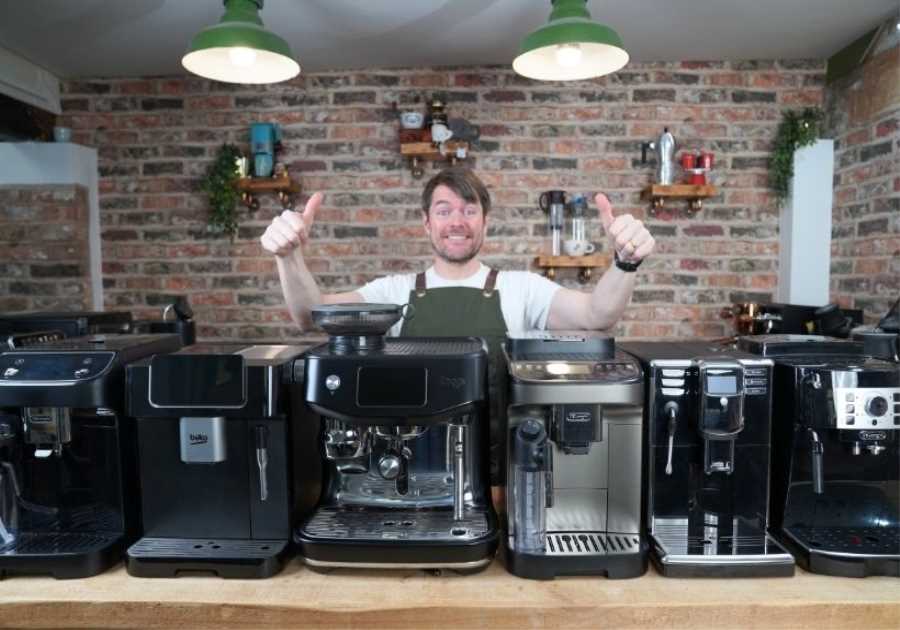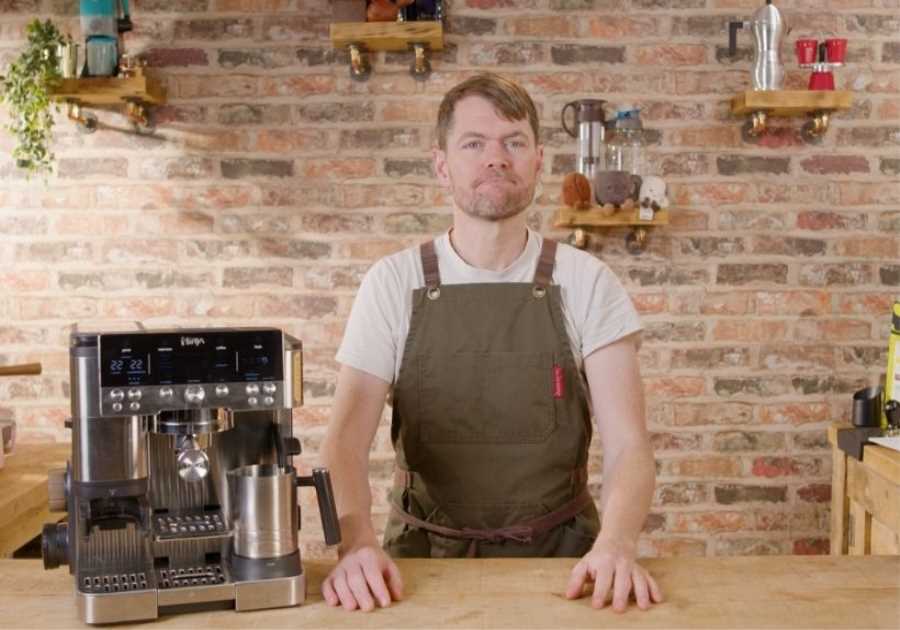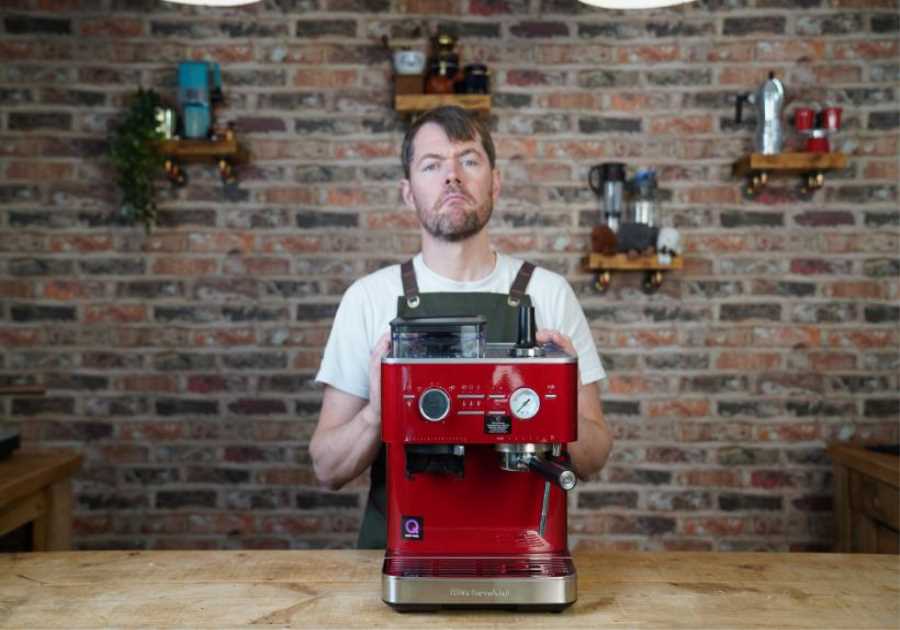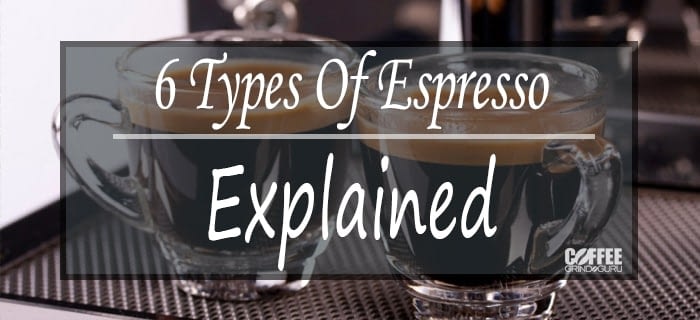
I’m sure you’ve found the same strange coffee-shop occurrence as I have.
It seems as if coffee menus are growing more and more as time goes on. How can the coffee-hipsters possibly come up with more ways to make the same thing, coffee. Surely they’ve run out of new ideas by now.
When the list of coffee options is ever-growing, it can seem impossible to keep up if you’re not in the loop. How even do you get in the loop?
Not to worry, I’ve got you covered.
While coffee menus certainly grow arms and legs when you begin to add milk and all sorts of other ingredients to Espresso; this article is all about Espresso itself and it’s many variants.
While we could go into the milky variations, I think that’s a story for another time.
Here are the different types of Espresso that you can order in a coffee shop. Let’s start with the baseline, the good old fashioned Espresso.
The 6 Different Types of Espresso
Espresso
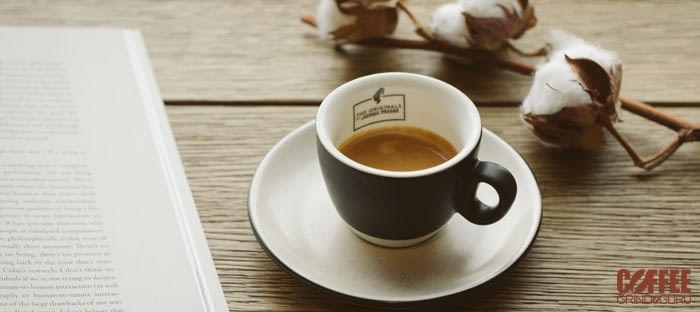
The Espresso is the original, and classic, that we all know and love.
The key difference that sets Espresso apart from all other brewing methods is pressure. 9 Bars of pressure to be exact.
While other coffee gadgets, such as a Moka Pot or AeroPress, might claim to be able to make espresso, they only generate somewhere in the region of 1.5 Bars. Not a patch on a big, mighty, espresso machine.
To give you an idea of just how much pressure 9 Bars is; atmospheric pressure, the air you’re breating right now, is about 1 Bar. That’ll certainly make your ears pop.
On top of the 9 Bars, the perfect brewing temperature is between 195℉ and 205℉.
A single shot of Espresso is 1 ounce. More often than not though, you’ll be served a double Espresso; 2 ounces.
It’s this delicate combination of hot, pressurized, water forcing its way through a compacted puck of ground coffee that we get the golden, syrupy, espresso goodness flow into our coffee-chalices in 20 to 25 seconds.
Without this high pressure, we would not have the wonderfully frothy crema on top, nor would the brew be anywhere near as strong.
It’s intended that you drink your espresso immediately after it has been brewed. If you leave it too long, it will cool down and the crema will break down.
If you ever order an espresso, and it’s served with little to no crema, there was too much time between it being brewed and then served to you.
Ristretto
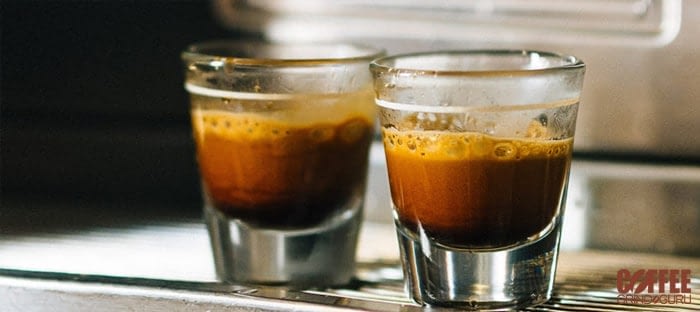
Ristretto is Italian for “restricted”. It is quite literally, an espresso with a restricted amount of water.
Why? Well, it makes a seriously different brew, that’s why.
As with any coffee brewing method, the sweeter flavors will dissolve, from the coffee grounds, into the water first. As you brew for longer, the more bitter, harsher, flavors will then dissolve into the brew.
So when I said a Ristretto is an espresso with a restricted amount of water, it’s more of a restricted brew time; between 12 and 15 seconds rather than 20 to 25 seconds for an espresso. So you end up with a smaller brew volume; about half an ounce, not much.
The harsher, bitter, chocolatey, caramelly flavors don’t get a chance to dissolve. By using less time and water, you get a coffee that is far more concentrated, thicker, and all of the sweeter, bold, and fruity flavors that do dissolve quickly.
Because a Ristretto is about half of the volume of an Espresso, you will usually be served a double Ristretto in a coffee shop, that’s 1 ounce.
More on the differences between ristretto and espresso here.
Lungo
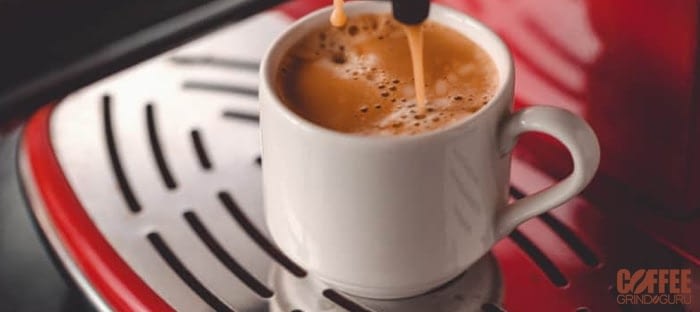
In Italian, Lungo means “long”. You guessed it, as if it’s the opposite of a Ristretto, it’s a long Espresso; it runs for longer and has about twice the volume of a regular espresso; about 2 ounces.
If you’re thinking that pouring a Lungo sounds like the perfect way to burn an espresso shot, you’re pretty much dead on.
Because a Lungo is brewing for about twice the time, much more of the harsher, darker, bitter, acidic, and chocolatey flavors will be included in the cup. This is a hard-hitting coffee, and not for the faint hearted.
It’s also a much thinner coffee, almost runny compared to a Ristretto.
While a Lungo might not be for everyone, it is also exactly what many people want. Of course, that’s why it’s a thing.
It is full of dark, intense, and complex flavors. What’s more, there’s double the volume of an espresso, so more complexity to wrap your taste buds around.
Doppio

The Doppio feels almost like we’ve been cheated out of a neat Espresso variant.
Doppio means “double” in Italian. It’s just a double espresso; 2 ounces. Simple as that.
It’s nothing more than a mild language barrier that has made this a seemingly different thing from a double Espresso.
Americano
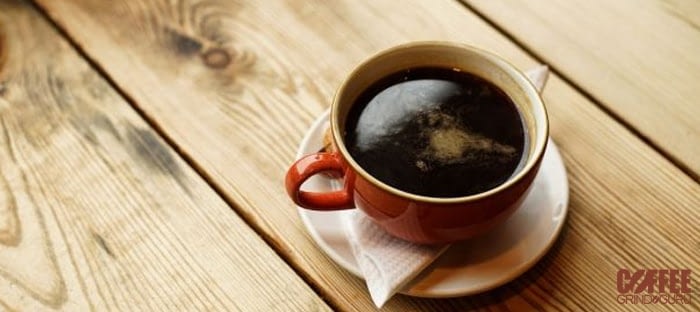
The legend of the Americano could be nearing a century old.
The tale of the Americano goes back to The Second World War. Supposedly, when American soldiers reached Europe, they found Espresso to be far too strong for their liking. So they added hot water to the brew to make it something more similar to their loved drip coffee from back home.
This was much to the disgust of the local Italians at the time, so when they called it an Americano, it was more of a mocking name. It stuck all the same.
This might not be the true origin of the Americano. It’s just the story that has been handed down over the years. There’s not many other origin stories for us to go on with this brew.
How much water that’s added is really up to the drinker, or in most cases, down to the Barista.
While the name might have a bit of a mocking origin, it’s similar to pouring a little bit of water into whisky. It sort of separates out the many flavors, slows down the intensity, and gives you more of a chance to appreciate the deliciousness.
Long black

The Long Black is a new addition to the Espresso-world.
It’s a coffee-creation from down under. Now I’m betting you’re struggling not to read Long Black in your head without an Australian accent. Guilty.
In all honesty, it’s not massively different to an Americano. The difference is all in the preparation.
Hot water is poured into the Espresso shot gently so that the crema is not disturbed.
That’s it. A Long Black is just a fancier, nicely-presented, Americano.
I’m not being completely fair to the Long Black there actually. By keeping the crema intact, you are preserving a lot of the original flavor, texture, and keeping harsher flavors in the crema from mixing with the rest of the coffee.
I’ll also maintain what I said about the Americano being a bit like adding water to whisky. By gently adding water to the Long Black, you’re giving more of the delicate flavors a chance to shine through the others. If you’re wanting to try a coffee-tasting (called a cupping), then turning your espresso into a Long Black can be really fun and tasty.
Pro tip: If you’re ever planning to try to make a Long Black yourself, use a spoon to direct the added water, gently, down the inner surface of the cup.
Final Thoughts
So there we have it, the six different types of Espresso. If you wanted to be parnickety about your Espresso, you could say that the Ristretto and thee Lungo are the two most different types of Espresso.
Doppio is just more Espresso. MOAR.
The Americano and Long Black are, essentially, just Espresso with some hot water added.
Just because some of the differences are small, doesn’t mean that they don’t make a big difference when it comes to trying them.
If you’re a massive coffee nerd like me, you could try one of each at the same time. No? Too much coffee?
Well, you could built up your caffeine tolerance before you take the plunge, or you could do what most other normal humans do and try them all one at a time. You certainly won’t be disappointed which ever way you decide to try them.
Or if milk is more your thing then check out this Latte vs Cappuccino article.
Title: 6 Types Of Espresso Explained
Sourced From: www.coffeegrindguru.com/blog/6-types-of-espresso-explained/
Published Date: Sat, 03 Oct 2020 17:28:42 +0000
Always check our latest articles at...
https://coffeecutie.com/espresso-brewing


